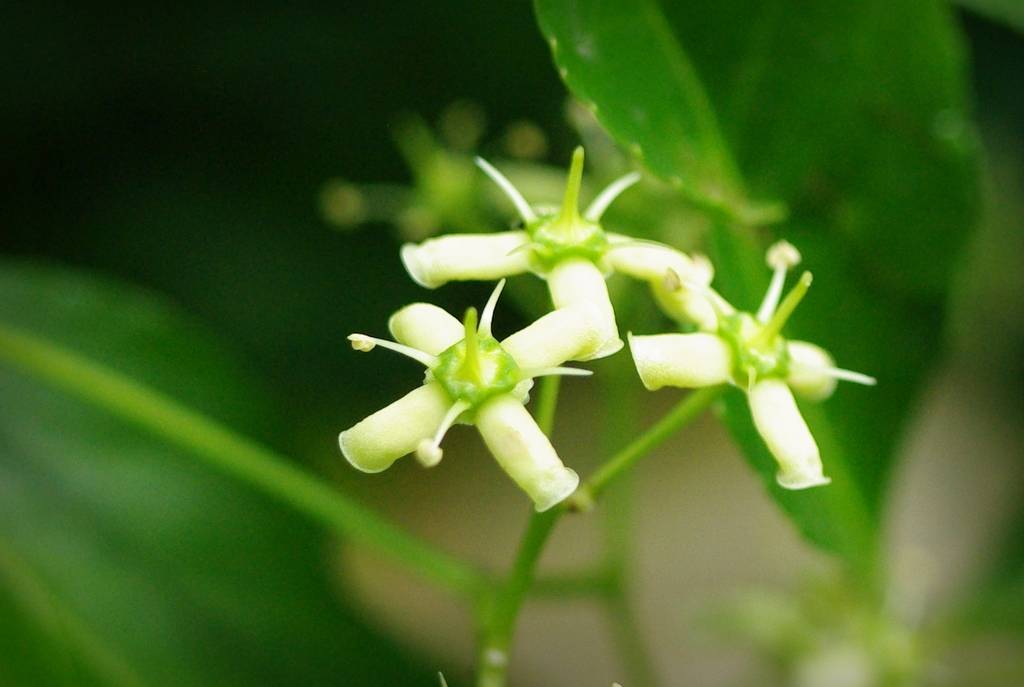Today I present a story about camouflage, specifically in the insect world. I'll use my favorite insect (the praying mantis) and one of my least-favorite plants (a euonymous).
Although my kept-in-the-refrigerator mantis egg case never hatched -- the first time I've ever had a hatching failure -- I've seen plenty of small mantises in the yard this year. I've also not been able to see them, even when I want to and know exactly where to look, and that's the point of this post.
Let's start with a view of a mantis:
What, you can't see it? How can you miss it? It's on huge bamboo leaves, where there's no possibility of camouflage. Okay, let's zoom in a bit:
I have to admit that even on this "easy" large-leaved plant the inch-long mantis is fairly well hidden.
Let's take a look back at the euonymous, which has been blooming for a month or so, attracting all sorts of pollinators -- mainly flies of all different types:
(Please excuse some of these shots, as these guys don't hang around very long.)
A perfect spot for a predatory insect, right? Well I thought so, and moved a second mantis from the bamboo to this plant a week or so ago. It's right here:
Wait, that's not a mantis. It really looks like one though. How about this next one:
Nope.
Man, it's really difficult to find the mantis on this shrub -- the flower structures are too similar to a mantis head, providing the perfect camouflage for the growing creature.
I mean, how can I be expected to find a mantis in that?
In fact I didn't. I gave up looking after 30 minutes of searching for that shot that would close out this post so perfectly.
Or maybe the fact that I couldn't find the insect I was hunting for is the perfect ending to this post on camouflage...
.
















I've looked several times, and I just can't find the mantis that I know is in this shrub somewhere! I guess I'll have to wait until later in the summer when it's much larger.
ReplyDelete